Class 5/6 History: The Migration Period and Viking Age
Class 5/6 have immersed themselves in their current History Main Lesson Block – ‘The Migration Period and Viking Age’ in the period 476-1066 CE, following the collapse of the Roman Empire in Britain.
They started by re-writing Beowulf – the Anglo-Saxon heroic poem- in their own words. They learnt about Celtic knot-work and incorporated it into their work with intricate borders.
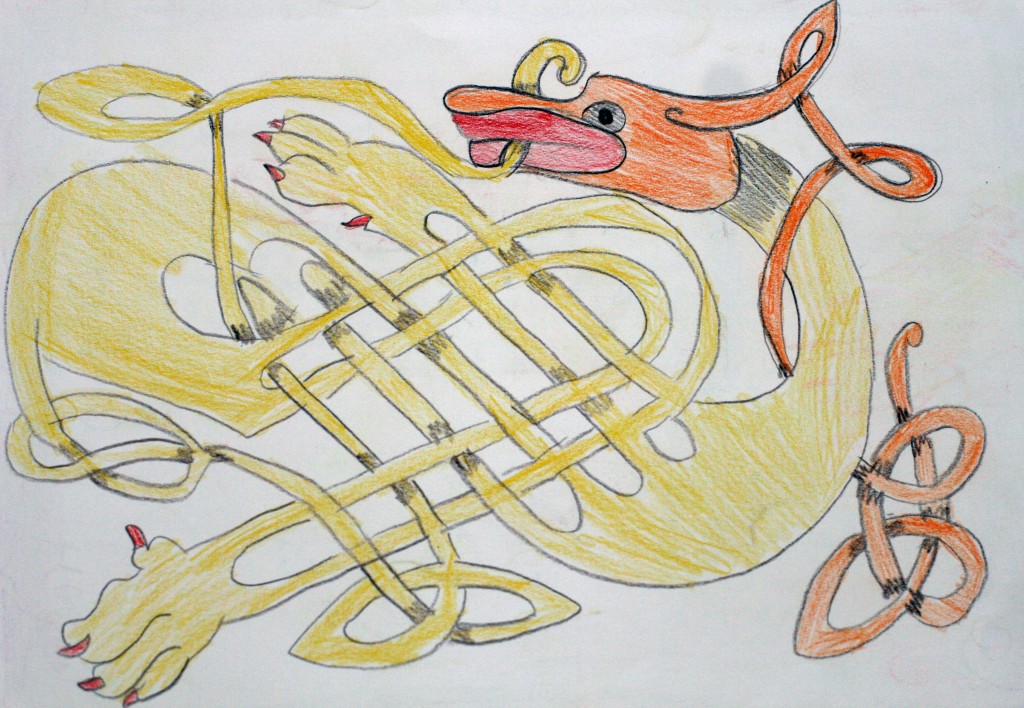
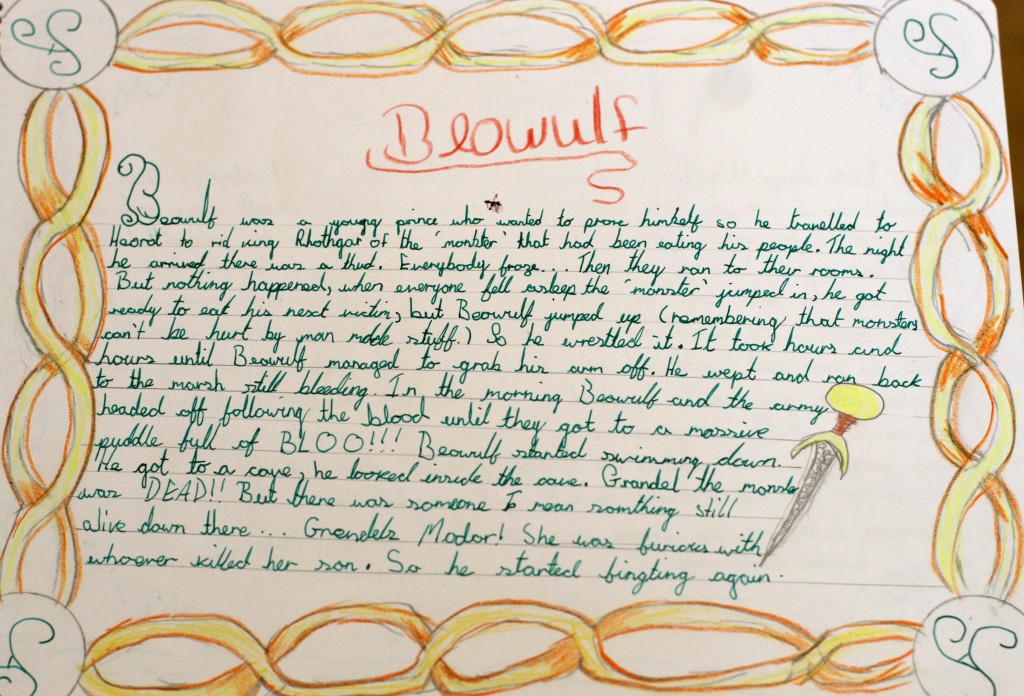
They considered the historical factors that contributed to the migration of the European tribes and saw how the tribes settled in new areas now known as France, Hungary and England, This will tie in well when they come to study ‘European Geography’ at the end of the year.
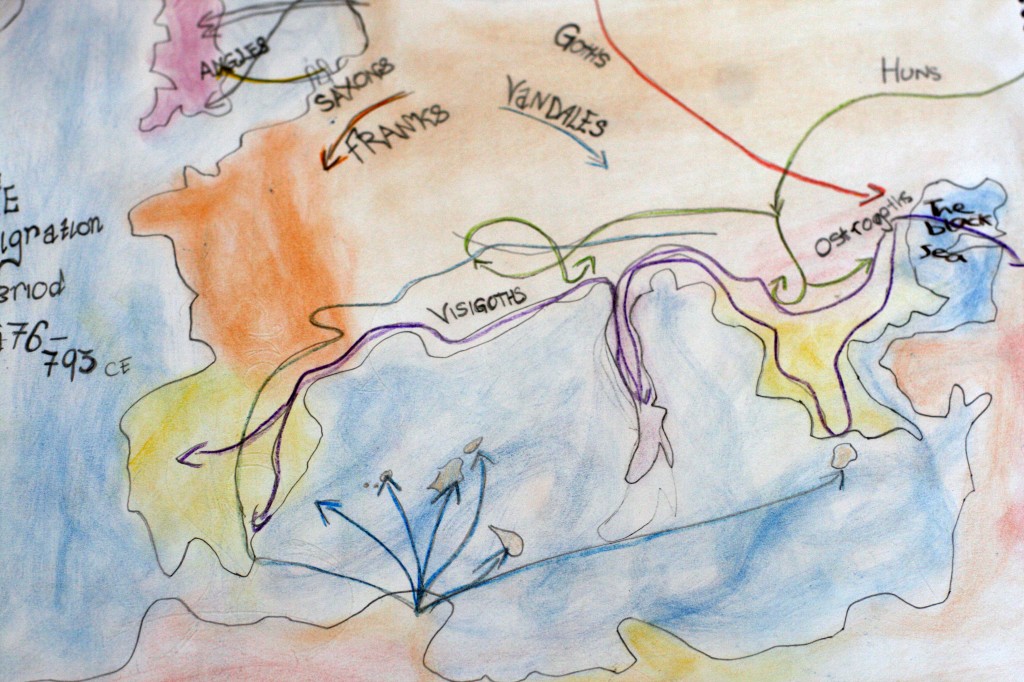
They discovered what Vikings really looked like – very different from the Victorian image of fur and horned helmets still prevalent today. They drew a Viking Fur Trader and female Farmer ‘from life’ as Mrs Pugh wore a succession of authentic costumes on subsequent days of the week, starting off with a dramatic sword fight between Rus Vikings – Mrs and Mr Pugh-, cheered on enthusiastically by children from all the Classes who came to watch.
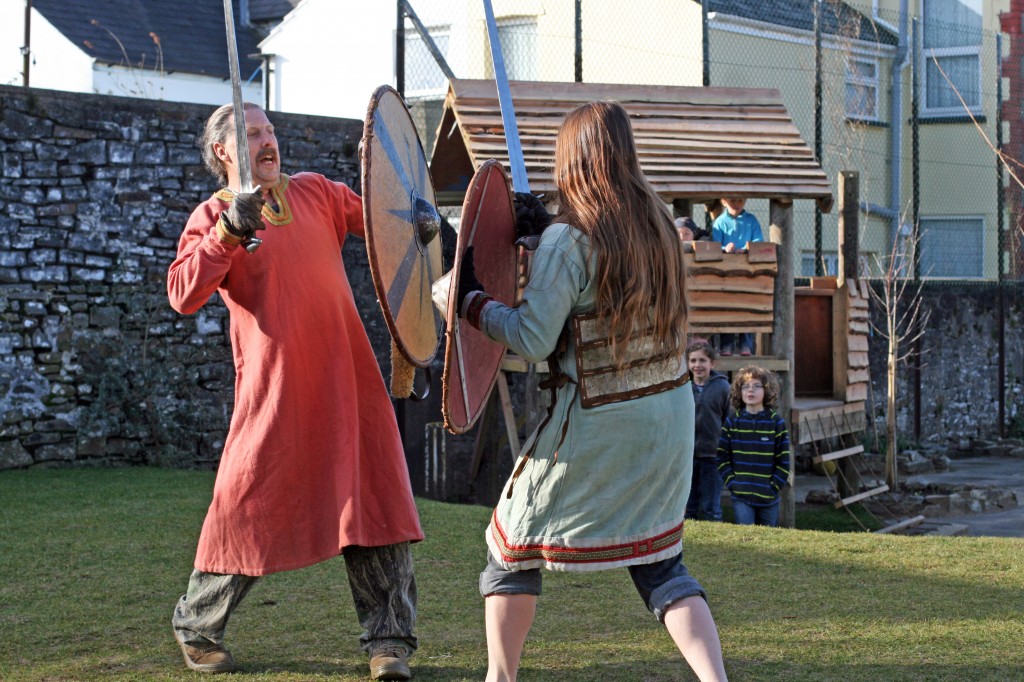
The Class enjoyed hearing about Leif Ericson -the explorer who journeyed to North America nearly 500 years before Columbus –and Roland and his settling of Normandy, from our Class 1 Teacher interview candidates.
The Block is ending with 1066 – the ‘Year of 3 Kings’: Edward the Confessor who dies in January; his succession by Harold II (Godwinson) who defeats the Viking King of Norway, Harald Hardrada; and the invasion of the Normans and the victory of William Duke of Normandy at the Battle of Hastings in October, crowned King William I in December. This is the traditional end of the ‘Dark Ages’ in Britain.
The Class have been studying the Bayeux Tapestry, considering its accuracy as a primary source (they have learned to be sceptical of primary sources since their Rome block) and have been drawing scenes from the Tapestry in their Main Lesson Books.
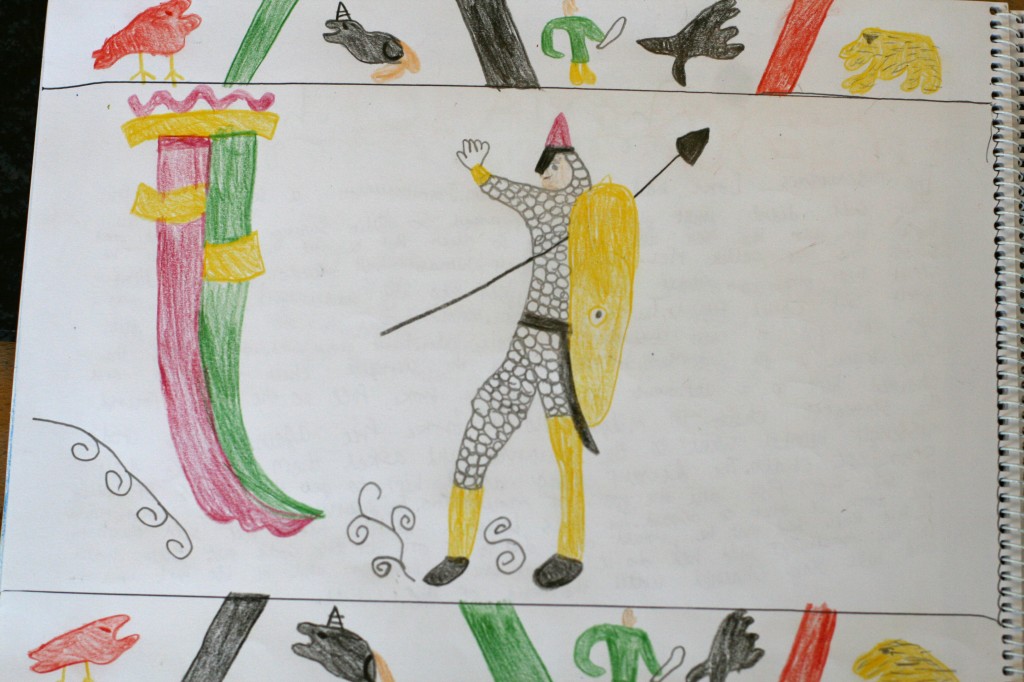
A major practical project running throughout the block has been the production, step by step, of their own vellum manuscripts from scratch. Starting with preparing the animal skin, they stretched and scraped the hide with flint or sickle shaped steel. They made such an excellent job of this that there was no need to bleach the hide with lime (they all noticed how superior our class-prepared vellum was to the samples bought online from Amazon – no hairs on ours!)
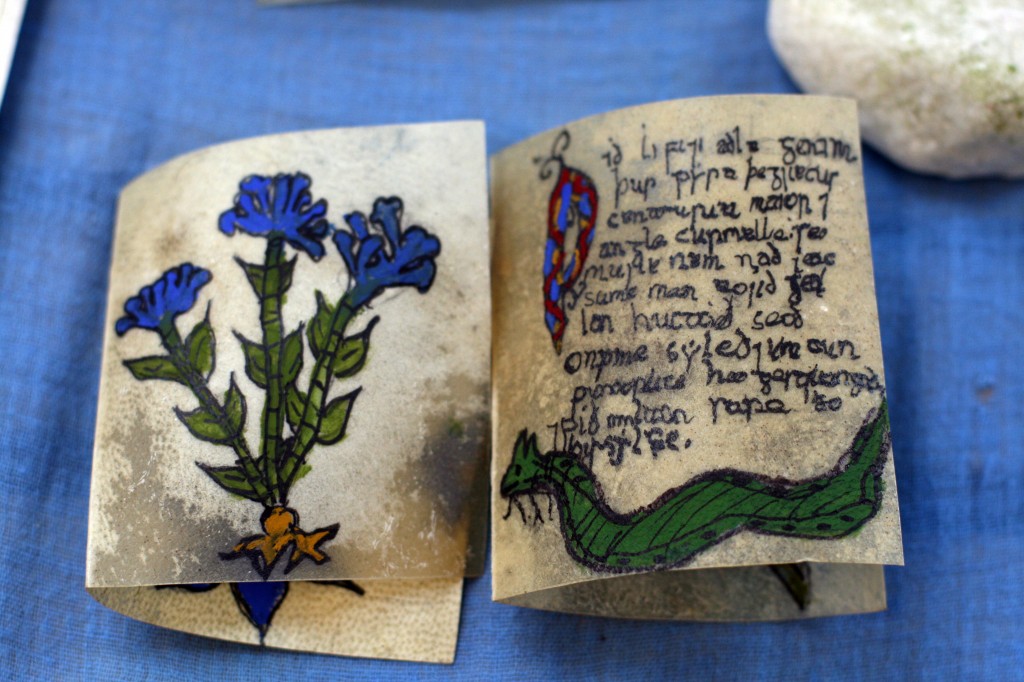
After trimming and folding the hide into pages, they studied how ink and mineral pigments were made in the period. This tied in well with the children’s learning from their last Main Lesson Block in Mineralogy and Geology. They examined different minerals and their pigment properties – iron for red, sulphur for yellow, copper for green and the prized lapis lazuli for blue.
Each child chose a specific alphabet of the period, and a particular type of manuscript to make. After lots of practice in their chosen calligraphy they began to create their books using ink made by themselves from egg-white and charcoal.
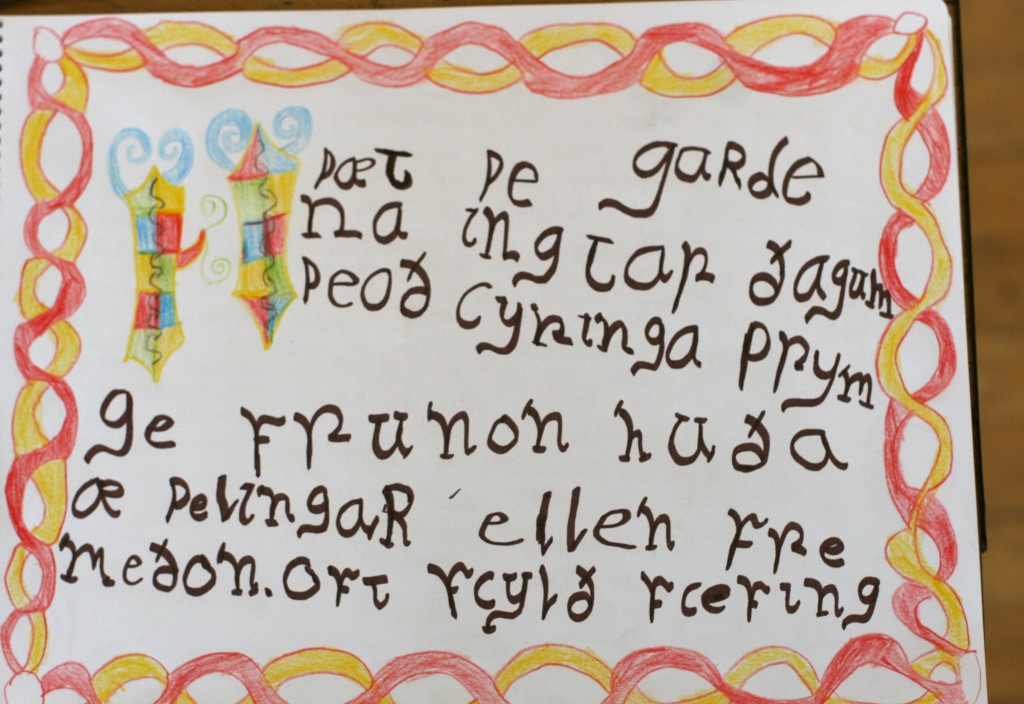
They learned about, and incorporated, illuminations (large, decorative first letters) illustrations and medieval marginalia (notes and comments in the margins). They particularly enjoyed the real-life historical example “this vellum is still hairy” (maybe it was from Amazon too).
After producing some fantastic work the Class bound their books in vegetable tanned leather and are currently preparing bone closure/fasteners to complete them.
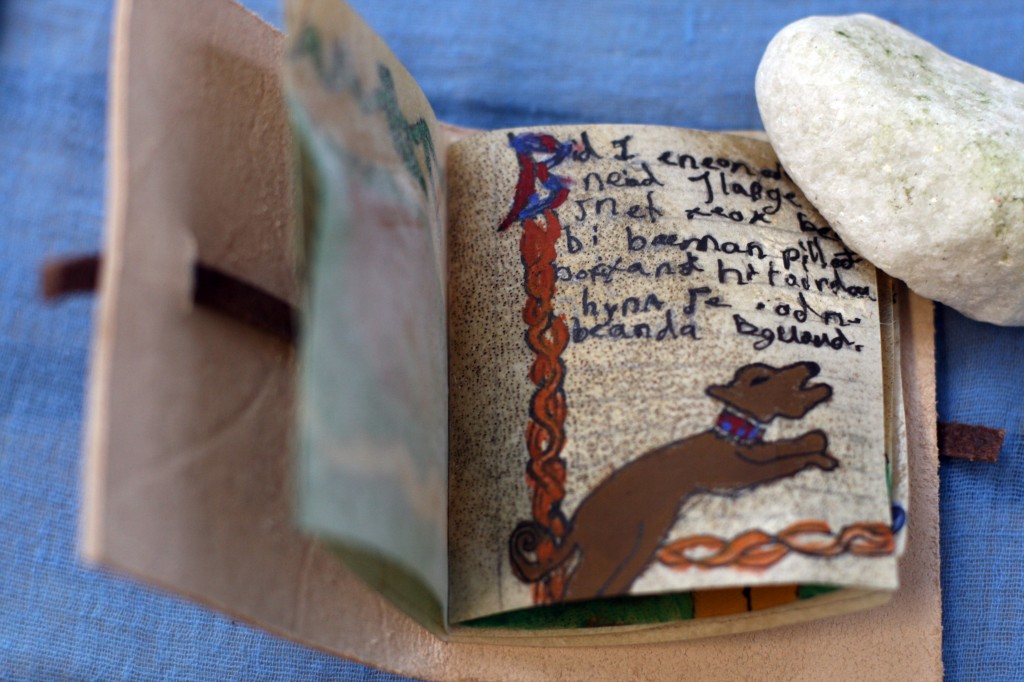
The Class have produced:
- 2 Saxon Herbariums (detailing the healing properties of herbs and plants)
- 1 Anglo-Saxon Bestiary (with images of fantastic far-flung creatures just heard of -such as elephants)
- 2 Poems of the beginning of the world in Norse Runes
- 1 Poem of the beginning of the world in old Norse Calligraphy
They are finishing the project by writing up a detailed Guide on how to make a medieval vellum manuscript- enriched by having done the whole process themselves.
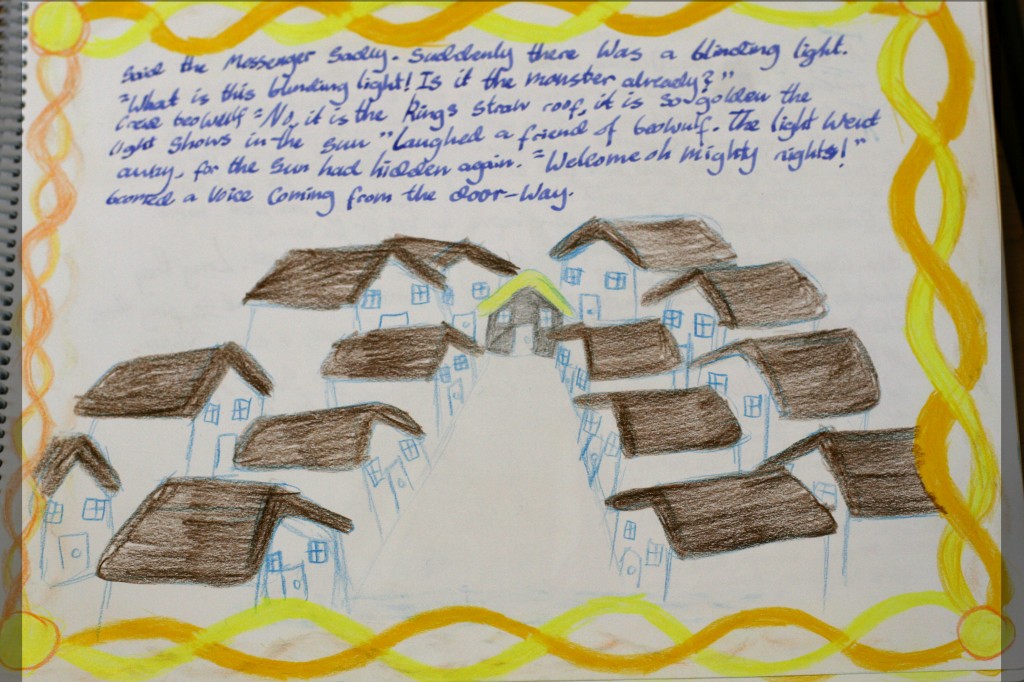
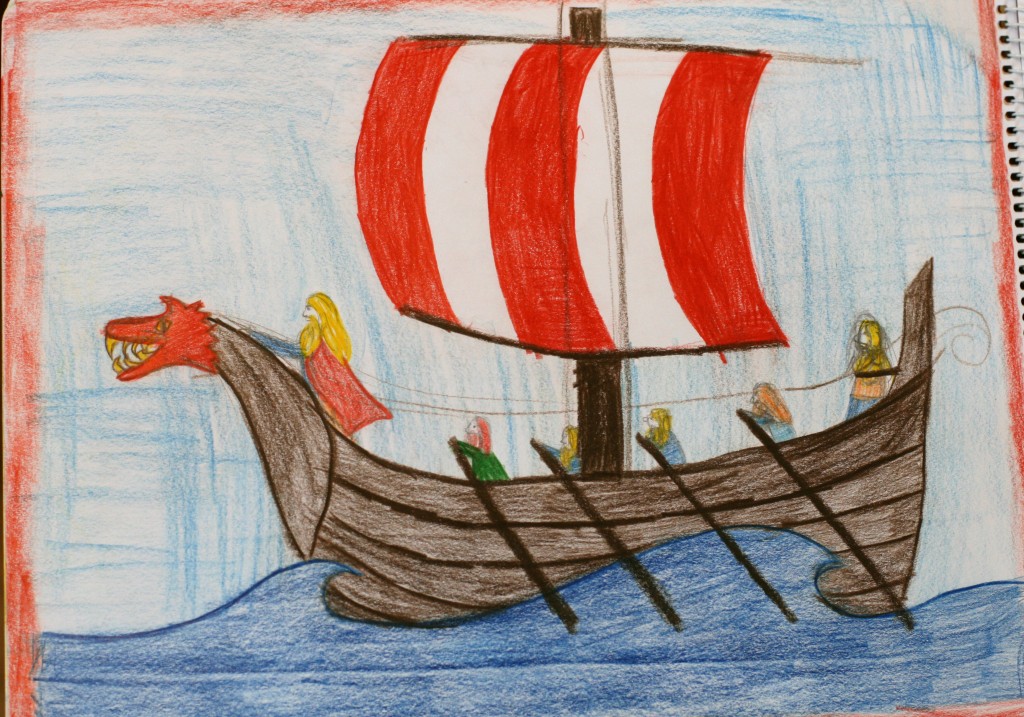
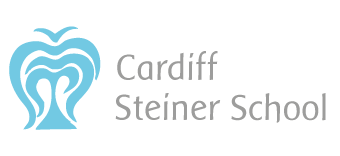
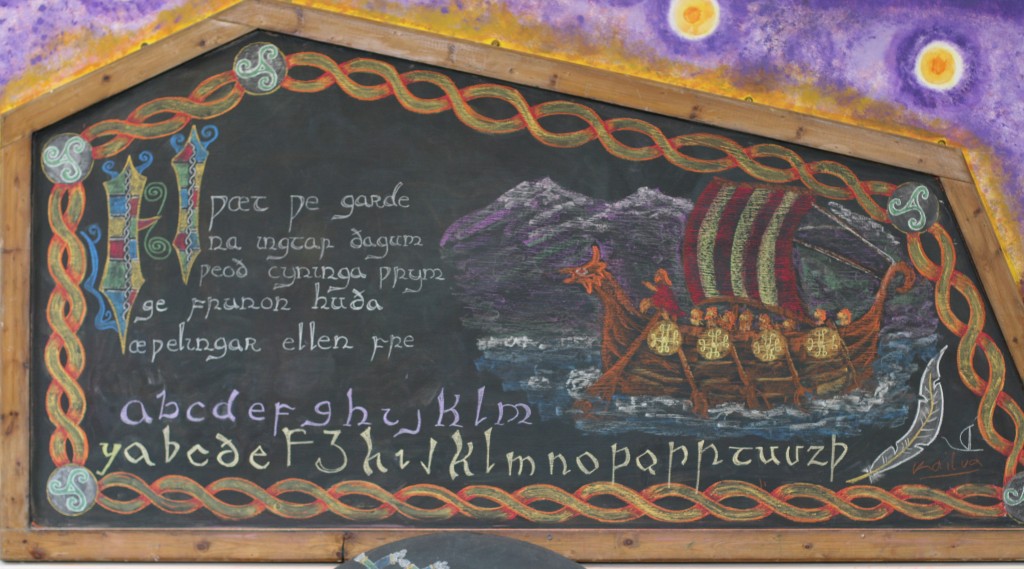
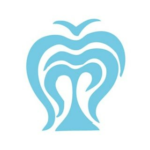

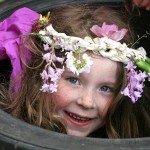
Leave a Reply
Want to join the discussion?Feel free to contribute!